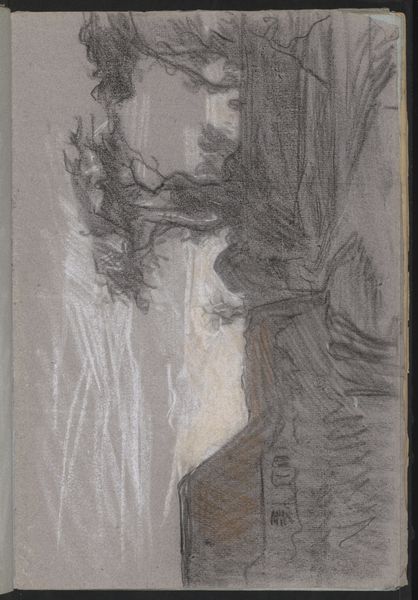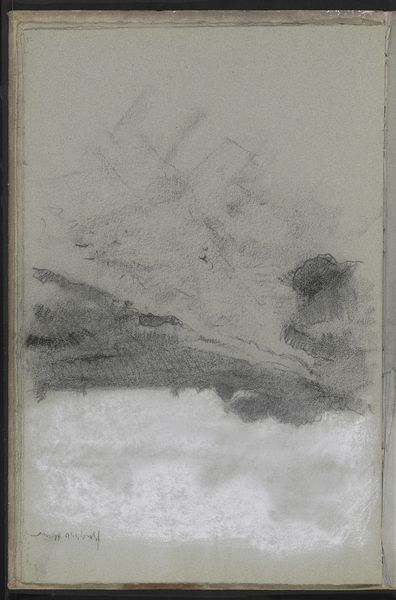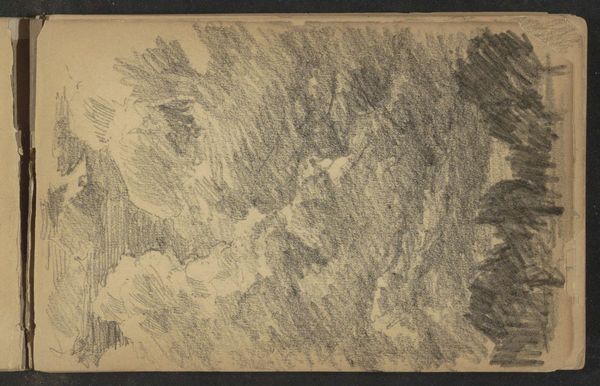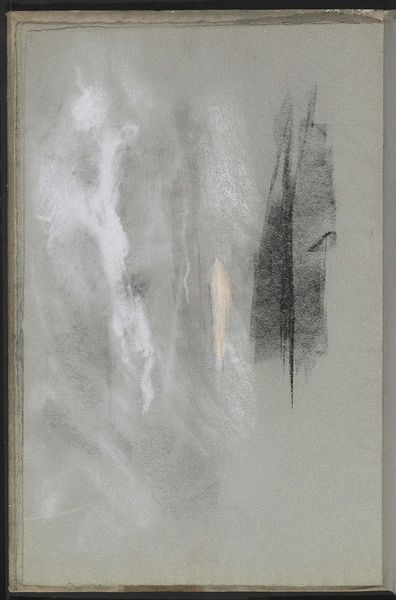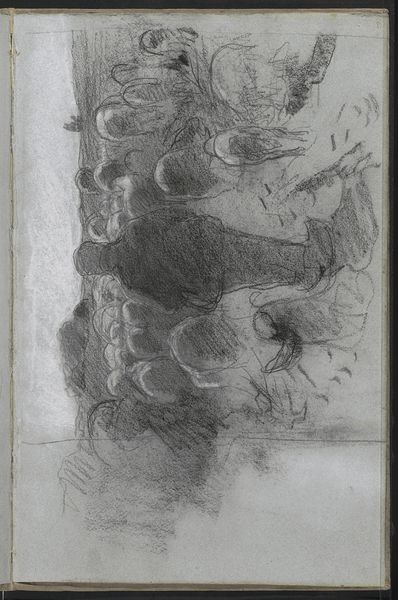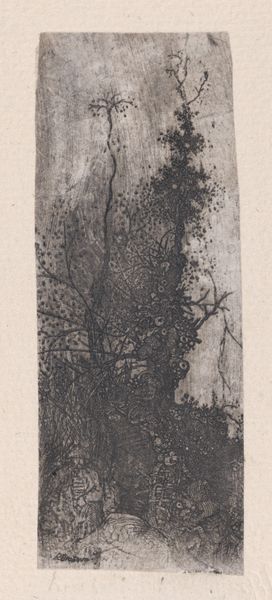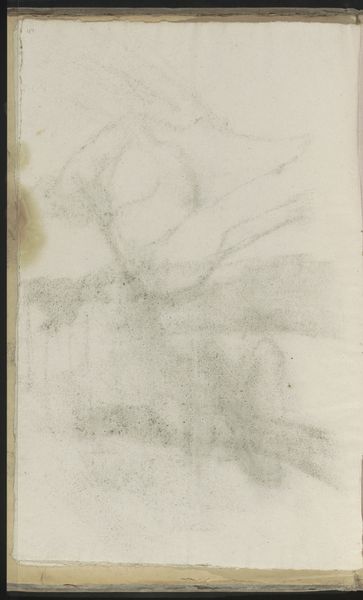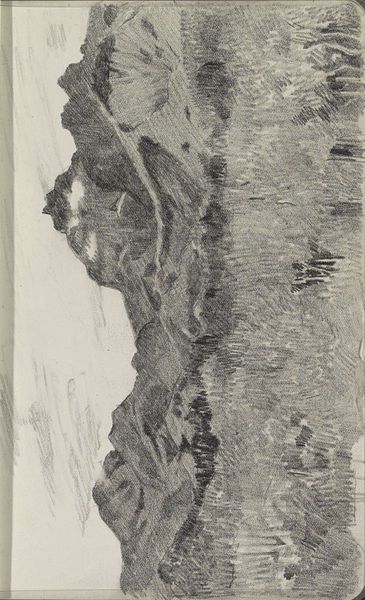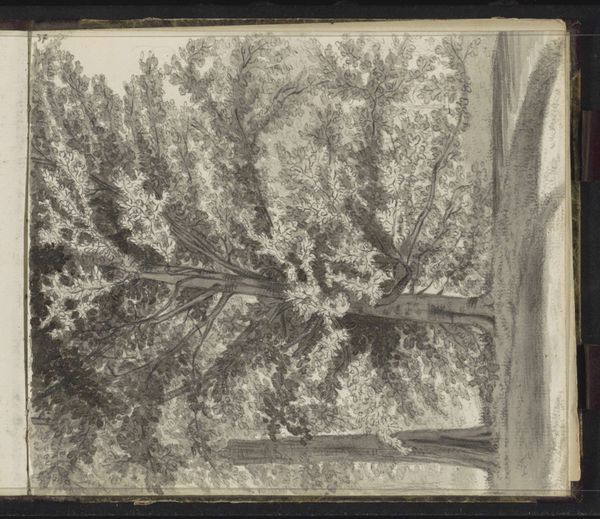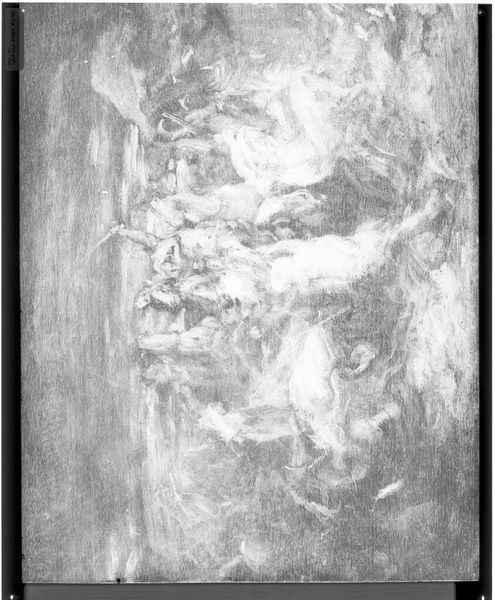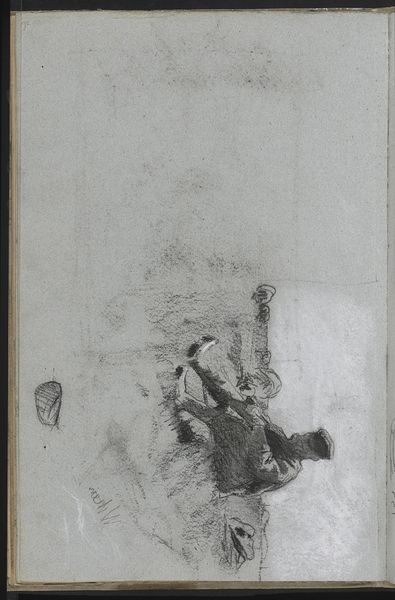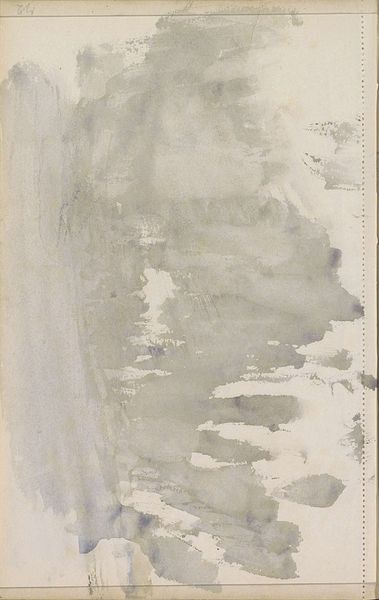
drawing, paper, pencil, graphite
#
drawing
#
pencil sketch
#
landscape
#
paper
#
pencil
#
graphite
Copyright: Rijks Museum: Open Domain
Curator: Standing before us, we have a piece called "Landschap, mogelijk een heidelandschap" – which translates to Landscape, possibly a heath landscape – created by Willem Witsen sometime between 1884 and 1887. It's a pencil and graphite drawing on paper. Editor: My initial impression? There's a real sense of looming darkness. The right side, with its intense, almost violent pencil strokes, feels weighty, threatening, doesn’t it? A beautiful, stark image. Curator: I feel that tension, too. Witsen often played with shadow and light in ways that evoke mood more than detail. Considering this was the era of burgeoning industrialization, landscapes held particular resonance. Editor: Absolutely. Landscape art provided both an escape and a critique of rapid urban growth. The heath, often seen as desolate and untamed, became a symbol of resistance against that industrial push. You can sense the earth pushing back here. Curator: Yes, and Witsen himself moved between urban scenes of Amsterdam and these quieter, rural landscapes, as if pulled between two worlds. This pencil work seems almost like a memory, doesn’t it? Something fleeting and precious. Editor: Fleeting, but also freighted. The heath was often a contested space. Grazing rights, peat cutting… they speak to the ongoing tension between humans and the land, and among different groups of people vying for resources. Look at how he renders the left side – the light, airy strokes almost seem to be pushed back by the dark mass on the right. Curator: A pushing back...that’s so astute. There's a certain urgency in those pencil strokes, almost as if he’s trying to capture something that’s rapidly disappearing. It's beautiful but melancholic, isn't it? It’s there… then, maybe, gone. Editor: Melancholic, yes. A premonition, perhaps, about what gets lost in the name of progress. Makes you consider whose stories are valued—or erased—when landscapes are transformed. Curator: This close observation has made me view the drawing now with more contemplation, I appreciate how landscape, often seen as a retreat, can be so politically charged. Editor: Exactly. Art, even something seemingly as simple as a landscape drawing, offers such rich possibilities to explore the complex dynamics between society and nature.
Comments
No comments
Be the first to comment and join the conversation on the ultimate creative platform.
